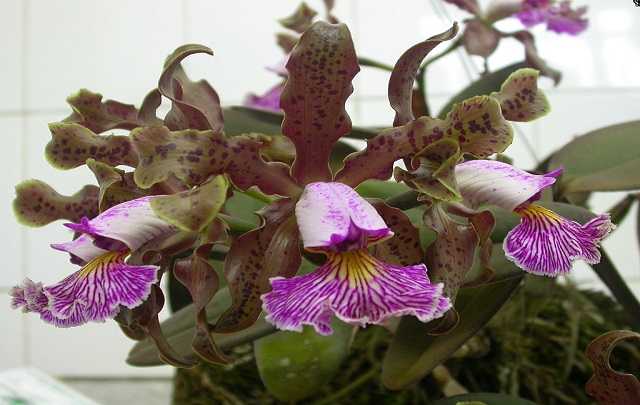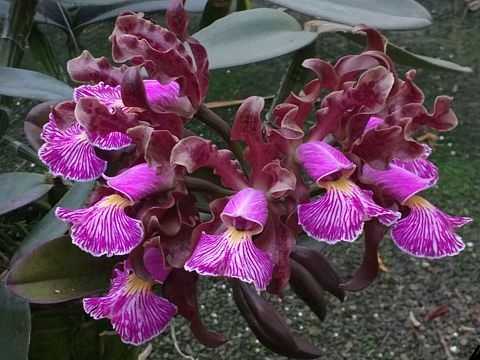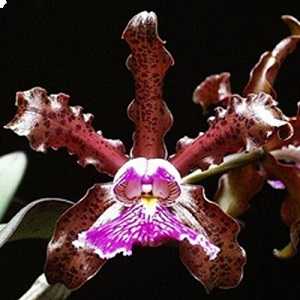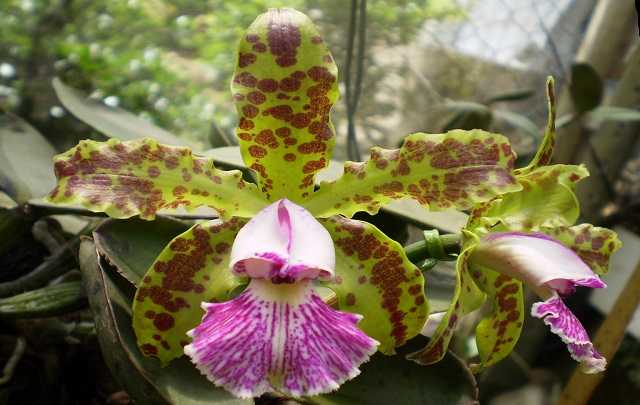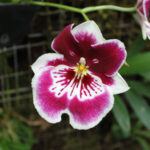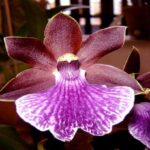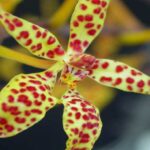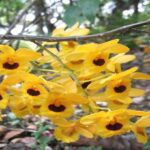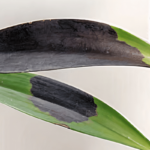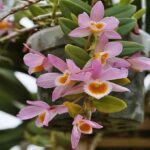Cattleya schilleriana is one of the most interesting orchids in the cattleya genus.
Currently, this plant is considered extinct in the wild, but any grower can buy it from an orchid nursery.
Discovered in the 19th century, it was named after the first place where it was cultivated (1857), the collection of Consul Schiller located in the city of Hamburg, Germany.
This is a Brazilian orchid that could be found in the following states:
- Bahia
- Espirito Santo
Unfortunately, illegal collection from nature and the destruction of its habitats contributed to its extinction.
Continue reading this article to learn more about its characteristics and how to cultivate this orchid.
Learn How to Achieve Super Blooms on Your Orchids
🛑 If you love orchids and you're tired of not being able to make them bloom...
Then, know that thousands of beginner growers are achieving beautiful flowers on their orchids by following this method.
Click the button below to have beautiful orchids with show-worthy flowers every year. ⤵
Characteristics
The cattleya schilleriana was initially found in Bahia.
At that time, it was mistaken for a hybrid between Cattleya aclandiae and Cattleya guttata, but this was quickly corrected.
Then in 1857, this orchid was registered by Reichenbach with its current name.
Its natural habitat was the Atlantic Forest, found in places with the following characteristics:
- High humidity, especially at night.
- High/medium brightness.
- Good ventilation.
One of the main features of this orchid is its pseudobulbs and leaves, which turn a color ranging from green to violet when exposed to the sun.
Being a bifoliate cattleya, Cattleya schilleriana is an orchid that grows very fast when cultivated under the right conditions.
In addition to the standard variety, there are also the following varieties of this cattleya:
- Caerulea
- Dulcotensis
- Haray
- Superba
- Regnelli
- Lowii
- Concolor
- Pitt
- Amaliana
- Trilabelo
- Regnelli
Note that this orchid is also used to create hybrids, resulting in very beautiful species.
Flowers
If you are having trouble getting your orchid to bloom, check out our complete guide on how to make your orchid bloom.
Blooming between spring and summer (September and October are the most common months), cattleya schilleriana can bloom more than once a year.
Its flowering is very beautiful, with up to 12 flowers, each about 5 cm (2 inches) long and 1.5 cm (0,6 inch) in diameter on average.
Regarding color, you will basically find schillerianas with flowers ranging from green to a reddish hue, often with round spots of various colors.
Each flower spike produces up to 5 flowers, but they usually gift us with only two.
Flowering lasts an average of 3 to 4 weeks, almost 30 days.
And now that you’ve learned about schilleriana’s flowering, let’s learn a bit more about how to care for it.
Cultivation of Cattleya Schilleriana
This is not an orchid for easy cultivation, so if you’re just starting to grow orchids and don’t have much experience, choose other plants.
Since this is a plant that is endangered, you should avoid losing it as much as possible.
Therefore, I have separated some essential tips below for you to better cultivate your cattleya schilleriana.
Watering
Let’s start with one of the most headache-inducing factors for growers of this orchid: watering.
This is an orchid that likes good humidity, especially at night.
In its natural habitat, cattleya schilleriana is accustomed to high nighttime humidity, so watering should be done at dusk.
It is extremely important that you pay close attention to your soil; it should not get waterlogged but should be quite wet.
If you use a harder potting mix, watering will be more frequent:
- Water at dusk
- Water in the morning (if the potting mix has dried out)
It is of great importance that you do this because cattleya schilleriana stores its water reserves in the pseudobulbs.
The bulbs of this orchid cannot dehydrate; if they do, they will not return to normal.
Brightness
Now that you’ve learned about one of the most complicated factors when it comes to cultivating your orchid, it’s time to understand a bit more about brightness.
NOTE: Brightness is different from temperature because brightness is the amount of light your plant receives, usually for orchids, it should be indirect.
For cattleya schilleriana, it is ideal that you use something between 50% to 70% shading in your orchidarium, I recommend 60%.
Avoid direct sunlight for your orchid during the hottest parts of the day.
Regarding temperature, try to provide a moderate or slightly cool climate, and avoid extreme temperatures.
Potting Mixes
This is an orchid that likes to be grown in harder potting mixes.
The following potting mixes are usually great options:
- Tree branches
- Charcoal / Perlite
- River stones
Remember that your potting mix must provide good drainage to allow them to dry properly.
NOTE: some growers recommend avoiding peat-based potting mixes.
Repotting
Repotting, like watering, is a very delicate point in cultivating cattleya schilleriana.
This is an orchid that doesn’t like to be repotted or moved much.
Therefore, avoid replanting, division, or any other changes with this plant as much as possible, as it may not adapt.
If repotting is necessary, do it after flowering when the new roots start to appear.
Do You Want to Learn How To Keep Your Orchids Healthy And Ready to Bloom Every Year?
So, I prepared a complete guide, step by step and illustrated, that will show you:
• The secrets to getting beautiful flowers every year
• How to fight and identify pests and diseases on your orchids
• THE MAGIC SUBSTANCE for orchids and how to use it
• And much, much more.
The great news is that the manual is now available at a super discount!!
But beware, it's only for the first buyers.
Click on MORE INFORMATION below and discover the secrets to show-worthy flowers. 👇
Where to Plant
This is an epiphytic orchid, so it cannot be planted in the ground.
There are some videos showing the use of soil as potting mix for this orchid, but this should be done very carefully.
Usually, cattleya schilleriana is cultivated very well in the following places:
- Hung on wooden stakes
- Clay pots
- Cache pots (orchid wood basket)
The choice of pot can vary greatly, but if you choose any of the options above, your cultivation will not have problems.
NOTE: some growers prefer clay pots because they report that they obtained larger and stronger orchids in them.
Conclusion
Cattleya schilleriana is a very interesting orchid and a great cultivation option for slightly more experienced orchid enthusiasts.
This is a very interesting plant, but difficult to cultivate.
If you want to learn more about the Cattleyas genus and its species, access the articles below:
- Cattleya Intermedia – Types, Varieties, and How to Care
- Cattleya Walkeriana – How to Care in 7 Simple Steps
- Cattleya Labiata – Characteristics and How to Care
And if you liked this article, help us by sharing it on your social networks, to do so, click on the icons below.

